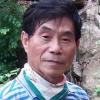Hi, Kangaris,
Typical cascade control loop has two controllers - one master controller and the other slave controller. The master controller automatically inform the set point of the slave controller.
For the electric heater circulating system, heater inlet temperature is assumed to be the same as that of buffer tank, and the heater outlet temperature as the heater . A master inlet temperature controller with a slave outlet temperature controller could make a cascade control loop. The inlet controller shall set the set point of the outlet controller, which control the power to the electric heating elements.
But be sure to protect the electric heater elements, since the electric heater often overheat itself. Heater skin temperature(s) should be monitored and input power be cut-off if it exceed a limited value.
An "overide" protection loop for the heater controller may often be recommended which can automatically shifted (selected) to the proper output signal after comparing various controller output signals. Heater vendors may help for providing your system configuration.
~Stefano Kim, 200918

 FB
FB










